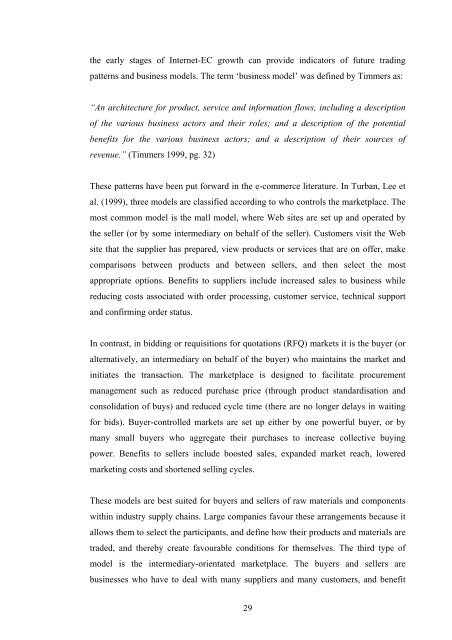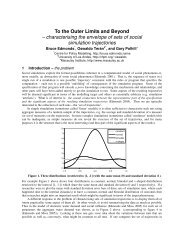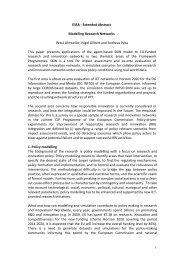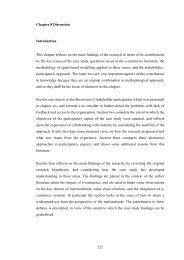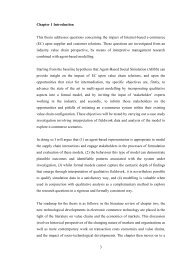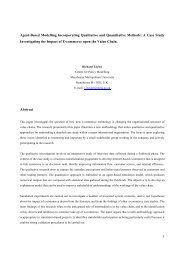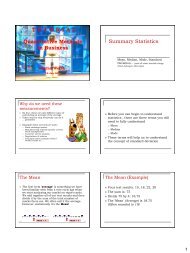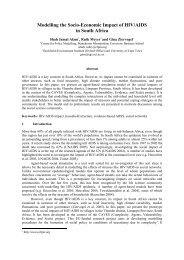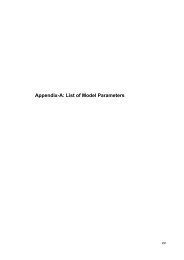7 Chapter 2 Literature Review: Markets, Intermediation and E ...
7 Chapter 2 Literature Review: Markets, Intermediation and E ...
7 Chapter 2 Literature Review: Markets, Intermediation and E ...
You also want an ePaper? Increase the reach of your titles
YUMPU automatically turns print PDFs into web optimized ePapers that Google loves.
the early stages of Internet-EC growth can provide indicators of future trading<br />
patterns <strong>and</strong> business models. The term ‘business model’ was defined by Timmers as:<br />
“An architecture for product, service <strong>and</strong> information flows, including a description<br />
of the various business actors <strong>and</strong> their roles; <strong>and</strong> a description of the potential<br />
benefits for the various business actors; <strong>and</strong> a description of their sources of<br />
revenue.” (Timmers 1999, pg. 32)<br />
These patterns have been put forward in the e-commerce literature. In Turban, Lee et<br />
al. (1999), three models are classified according to who controls the marketplace. The<br />
most common model is the mall model, where Web sites are set up <strong>and</strong> operated by<br />
the seller (or by some intermediary on behalf of the seller). Customers visit the Web<br />
site that the supplier has prepared, view products or services that are on offer, make<br />
comparisons between products <strong>and</strong> between sellers, <strong>and</strong> then select the most<br />
appropriate options. Benefits to suppliers include increased sales to business while<br />
reducing costs associated with order processing, customer service, technical support<br />
<strong>and</strong> confirming order status.<br />
In contrast, in bidding or requisitions for quotations (RFQ) markets it is the buyer (or<br />
alternatively, an intermediary on behalf of the buyer) who maintains the market <strong>and</strong><br />
initiates the transaction. The marketplace is designed to facilitate procurement<br />
management such as reduced purchase price (through product st<strong>and</strong>ardisation <strong>and</strong><br />
consolidation of buys) <strong>and</strong> reduced cycle time (there are no longer delays in waiting<br />
for bids). Buyer-controlled markets are set up either by one powerful buyer, or by<br />
many small buyers who aggregate their purchases to increase collective buying<br />
power. Benefits to sellers include boosted sales, exp<strong>and</strong>ed market reach, lowered<br />
marketing costs <strong>and</strong> shortened selling cycles.<br />
These models are best suited for buyers <strong>and</strong> sellers of raw materials <strong>and</strong> components<br />
within industry supply chains. Large companies favour these arrangements because it<br />
allows them to select the participants, <strong>and</strong> define how their products <strong>and</strong> materials are<br />
traded, <strong>and</strong> thereby create favourable conditions for themselves. The third type of<br />
model is the intermediary-orientated marketplace. The buyers <strong>and</strong> sellers are<br />
businesses who have to deal with many suppliers <strong>and</strong> many customers, <strong>and</strong> benefit<br />
29


